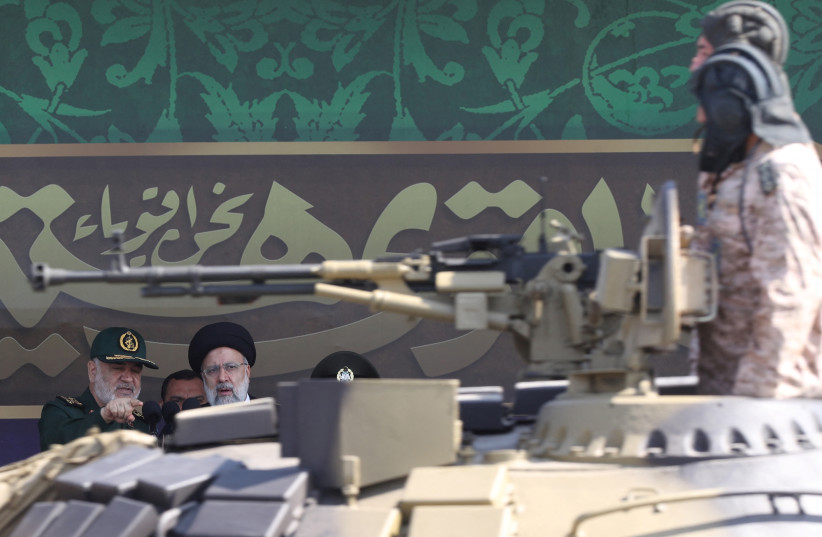Iran is seeking to create “strategic depth” in the Mediterranean Sea, Iranian military adviser Yahya Safavi said in a recent speech. This appears to admit Tehran’s larger ambitions in the region.
Iran has already taken over swaths of Iraq, Syria, and Lebanon, using proxies, and it has operationalized the Houthis in Yemen to attack ships in the Red Sea. Tehran also backs Palestinian Islamic Jihad and Hamas. It now appears to have even larger ambitions.
Safavi is a former commander in the Islamic Revolutionary Guard Corps. He now works as a military adviser to the Iranian regime and has an academic role at several universities. As such, he is very much central to the Iranian security apparatus and its strategic thinking in the region.
Safavi made his remarks at a conference celebrating the 40th anniversary of Imam Hossein University in Tehran, Iran’s Tasnim News Agency reported. He was discussing the university’s important role in Iran. Founded in 1986 by a commander of the IRGC, the university has thousands of students and is an important institution for the state.
“We have no choice but to deepen the country’s defense and security,” Safavi was quoted as saying. “Our strategic defense depth is the Mediterranean Sea, and we need to increase our own strategic depth by 5,000 kilometers.”
Iranian regime backing terrorist regimes
This clearly illustrates that the Iranian regime now wants to project its power – not just into Iraq, but also through Jordan and crossing the West Bank to Israel. Iran has already accomplished this by backing proxy groups and arming them with long-range missiles and drones.
The missiles and drones used by the Houthis have been threatening Eilat. Hezbollah has bragged that its missiles can target all of Israel. Hamas has fired 9,000 rockets since October 7, and Hezbollah has fired thousands as well.
Iranian-backed groups in Syria have also attacked Israel and US forces. Iranian-backed Kataib Hezbollah killed three American service members in Jordan in late January.

In his comments about the Mediterranean, Safavi also mentioned the Red Sea. He described the two seas as “strategic points” and emphasized that the Iranian navy and air force would be “focused on these points because the future wars [that] will be sea-based and air-based.”
This illustrates Tehran’s current ambitions. It wants to surround the Middle East with its proxies and leverage them to control much of the region. Iran’s air force is relatively small, and its naval forces are also not very large. But it has ambitions to increase its power at sea. It has recently constructed new ships and is working on more drones and missiles with longer ranges.
The Houthi threat to shipping has already become clear. This is a major threat to the region, and Iran believes it has impunity to carry out attacks. For instance, it has carried out ballistic-missile attacks in Syria and against groups in Pakistan in recent months.
Tehran’s ambitions are made possible not only by its network of proxies but also because other countries in the region prefer amicable relations and don’t want to be sucked into more endless wars fanned by Iranian-backed militias. That has enabled an Iranian end run around many of the countries so that it can extend its threats toward Israel and the Mediterranean.
The speech at the university in Tehran therefore is not just a talking point; it is a very clear reference to the Tehran regime’s thinking and strategy.
Iran’s regime has mobilized its proxies against Israel in the war since October 7. Now, after creating a multifront war in which Iranian-backed units threaten Israel in seven different “arenas,” Tehran is now laying its cards on the table to reveal its larger goal.
A 5,000-kilometer “strategic depth” clearly indicates that Iran now views the whole region as its “near abroad.” Countries will have to decide how to contend with the Iranian regime’s new ambition.
